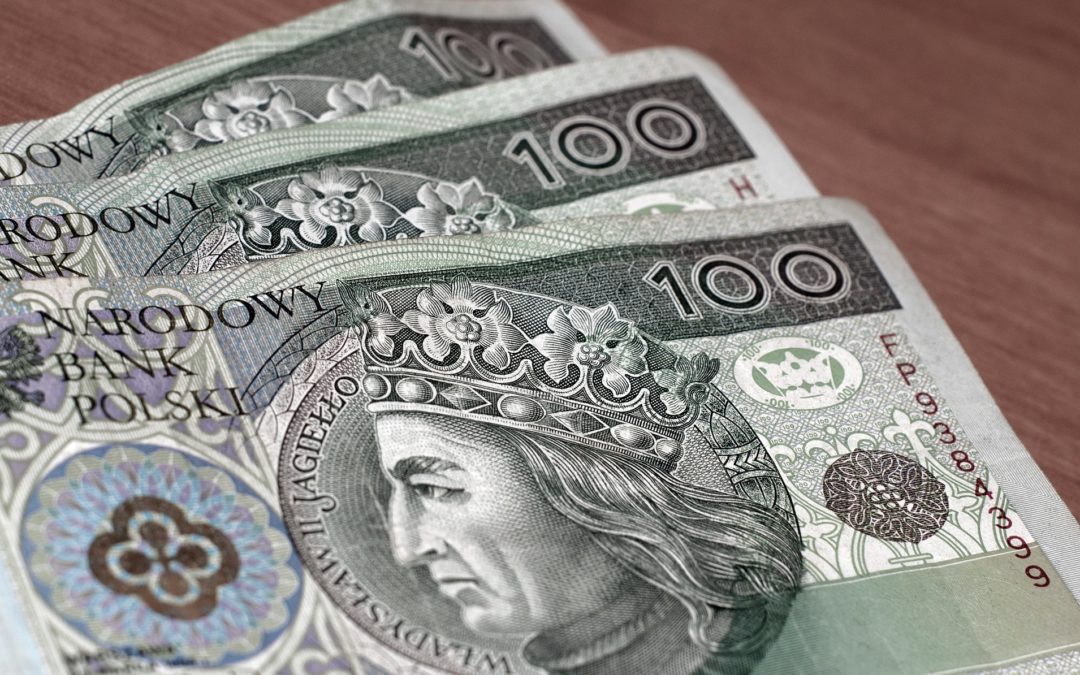Amid the economic fallout caused by the coronavirus, inflation rates are expected to be lower this year than in 2019 for most European countries, and even to fall below zero in some. Poland, however, is an exception, with annual inflation expected to be higher than last year.
According to numbers published by the European Commission, average inflation for 2020 is expected to come to 2.5% in Poland, surpassing the 2019 figure of 2.1%. By contrast, all other surveyed countries – including EU member states, Japan, the UK and US – are expected to see a drop in inflation.
Inflation in Spain may slow to zero, while deflation (inflation dropping just below zero) is expected in Italy, Ireland, Greece, Cyprus and Portugal. The largest percentage point drop in inflation is expected in Latvia, from 2.7% inflation in 2019 to 0.2% in 2020.
W całej Unii Europejskiej ceny w 2020 roku wzrosną wolniej niż w 2019 r. – przewidują eksperci. W kilku krajach mogą nawet spaść. Wyjątkiem jest Polska. Choć i u nas inflacja też powinna odpuszczać, nie zdoła zniwelować ogromnych podwyżek z początku roku.https://t.co/7VBvDyQoJJ
— darekkalicki (@igiel55) May 18, 2020
The European Commission’s figures, which are based on the HICP (Harmonised Index of Consumer Prices) measure, may differ from Poland’s own report, which uses uses the standard CPI (Consumer Price Index) approach.
In 2019, the HICP figure stood at 2.1%, while Poland’s CPI at 2.3%, according to Poland’s state statistics office, GUS. Despite methodological differences, both measures point to a similar trend.
On Friday, GUS announced that in April consumer price inflation in Poland had slowed from 4.6% to 3.4%. CPI monthly inflation is expected to further drop to 1.5% by December, according to experts from Santander bank, reports money.pl.
However, this is unlikely to offset the large price rises at the start of the year, when Poland recorded some of the highest inflation rates in the world, resulting in the 2020 inflation figure topping 2019’s.
Consumer prices in #Poland in April 2020 as compared to April 2019, increased by 3.4% (price index 103.4). As related to the previous month they amounted to 99.9.https://t.co/DuQVi2WIHk#StatisticsPoland #prices #statistics #CPI #PriceIndices #PriceIndex #inflation pic.twitter.com/isUQs3vzru
— Statistics Poland (@StatPoland) May 15, 2020
The situation has been driven mainly by rising food prices, according to Business Insider. Fruit and vegetables and meat together account for almost 11% of the basket of goods used to measure Consumer Price Index (CPI) inflation.
The price of produce this year has been dealt a triple blow by early frosts, one of the worst droughts in a century, and migrant labour shortages caused by the coronavirus lockdown.
A number of other factors have piled up in the early months of 2020: increased energy prices (which may be further exacerbated by the drought), hikes in rubbish disposal fees, as well as higher excise tax on alcohol and cigarettes.
For now, inflation expectations remain high. In a recent survey conducted by the Bureau of Investment and Economic Cycles (BIEC), 55% of respondents said that they thought inflation will accelerate, relative to just 10% of respondents at the start of the year.
Yet now the tide is turning, with much of the inflation across Europe reigned in by the economic fallout caused of the coronavirus crisis and the global slump in oil prices, as reflected in the latest figures from GUS.
“The coming months are likely to bring a slow down, but it seems unlikely that inflation will fall at the end of the year to, for example, around 1%. Deflation is even less likely,” says Monika Kurtek, chief economist at Bank Pocztowy, quoted by money.pl. “In my opinion, the average CPI measure for the year could come to 3.2%, vs 2.3% last year.”

Maria Wilczek is deputy editor of Notes from Poland. She is a regular writer for The Times, The Economist and Al Jazeera English, and has also featured in Foreign Policy, Politico Europe, The Spectator and Gazeta Wyborcza.




















